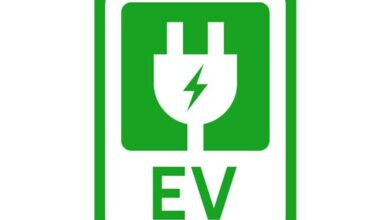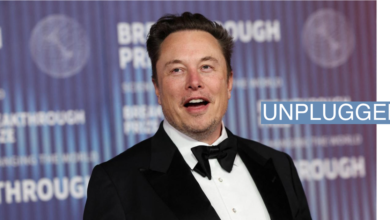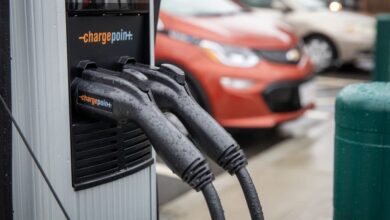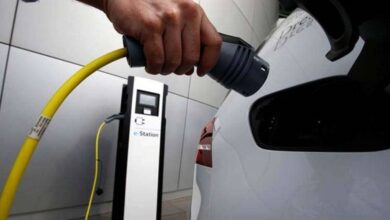The 2024 Porsche Macan EV has character, pace, and the right badge
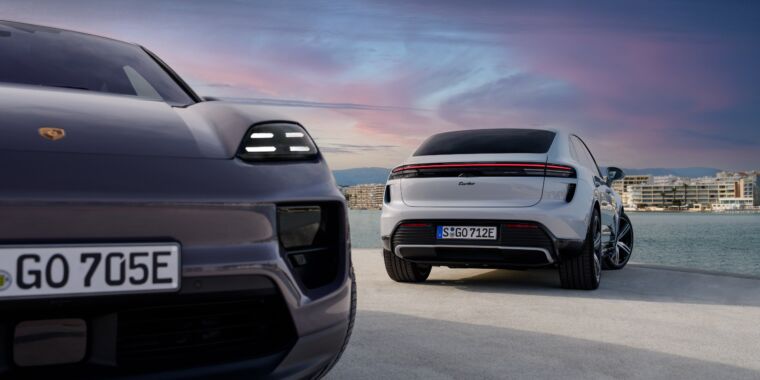
Porsche
Porsche’s Taycan has been a nice electric vehicle for the German brand, and the recently updated model is supposed to offer more of the good stuff and less of the bad. The sedan is on the expensive side, and it doesn’t scream “family lugger,” which is where the new electric Macan comes in. Porsche’s volume-selling entry-level SUV is now electric, and it might be just the car to convince skeptics and non-Porsche people alike that EV is the way to go. Maybe.
At launch, you’ll be able to pick up a Macan 4 or Macan Turbo. Peak power sits at 402 hp (300 k) and 630 hp (470 kW) respectively, but that’s just when you use the car’s overboost. Most of the time, you’ll have to make do with an adequate 382 hp (285 kW) and 576 hp (430 kW). Torque for both is a healthy 479 lb-ft (650 Nm) and 833 lb-ft (1,130 Nm). With all that grunt on board, Porsche reckons you’ll be able to hit 62 mph from rest in 4.9 and 3.1 seconds, respectively (0–100 km/h takes 5.2 and 3.3 seconds, respectively), as well as topping out at 137 mph (220 km/h) and 162 mph (260 km/h). Not having a gas motor under the hood isn’t a penalty when it comes to performance.
The electric Macan sits on the all-new PPE (Premium Platform Electric) architecture. Shared with Audi and its upcoming Q6 e-tron, PPE was built with electricity in mind. Its party piece is a hefty 100 kWh battery (95 kWh usable) that sits under the cabin, giving the Macan 4 381 miles (613 km) of range and the Turbo 367 miles (590 km), although that’s according to the less-accurate WLTP testing scheme used in Europe—EPA range estimates will be available closer to the Macan’s arrival in the US in the second half of this year.
-
At launch, the Macan is available as the 4 (left) or the Turbo (right).
Porsche -
The Macan Turbo is the one to go for if you want to go fast.
Porsche -
The car looks better than it did when we drove a camouflaged prototype last summer.
Porsche -
The Turbo features matrix LED headlights as standard, but we expect the US versions to be less capable than in the EU thanks to Department of Transportation regulations.
Porsche
Made up of 12 removable modules, the battery runs at 800 V, which means you can, given a 270 kW charger, get it from 10 to 80 percent state of charge in 21 minutes. That only works if the charger you’re plugged into supports 800 V, but if it doesn’t, the battery will virtually split itself into two 400 V units and top up that way. It takes a little longer, accepting a maximum 135 kW, but it still gets the car from 10 to 80 percent SOC in 33 minutes. Braking can net you 240 kW via regen, too. When I look at all the numbers. I can’t help but get a bit excited.
I struggle with the looks of the new Macan, though. The ICE car looks more nimble, lithe, and “chuckable,”—this does not. The ICE car’s distinctive side blade is present and correct, sitting low on the gas car. But because the EV has hide a giant slab of battery, the blade floats awkwardly high, causing the Macan to look a bit dumpy from some angles. The effect is less pronounced in darker colors, and you can have it in carbon should the mood take you. Up front, there’s a pretty hefty chin spoiler that doesn’t look ungainly, but if you spec it in piano black, try not to wince too hard when it gets stone-chipped into the next century. The rear, however, looks rather good in the metal.
Inside is a mix of what we know and love from Porsche, plus some new touches. The 12.6-inch instrument binnacle is laid out well, and you can tweak it to your preference. Special attention has also been paid to the 10.6 inch infotainment screen. Porsche is acutely aware that having a car able to sprint to 62 mph in no time is great, but if you have to wait a few minutes for the nav to boot up before you can leave the house, the whole thing feels a bit sour.
-
The Macan 4 is probably all the Porsche EV anyone needs.
Porsche -
There’s 17 cubic feet (480 L) of cargo volume with the rear seats in use or 45.5 cubic feet (1,288 L) with the rear seats folded flat.
Porsche -
Macan deliveries will probably begin in Q3.
Porsche
Turn the car on, and it’s ready in moments. You can flick between preferred apps, get the nav ready to go, and be on your way without having a second to moan. Should you stray from your route, the GPS is lightning-quick to reroute you, and there’s an optional 10.6-inch screen for passengers, too. They can watch things on it, play with it, and feel part of the fun, though I suspect their smartphone will do the job of keeping them entertained just as well, if not better. Android Auto and Apple CarPlay connectivity comes bundled in, and each comes with a neat trick—you can use Google Maps (with Android Auto) or Apple Maps (via CarPlay) natively on the car’s instrument binnacle, a feature that is just starting to become more common. (No Google Maps with CarPlay just yet, sadly.)
